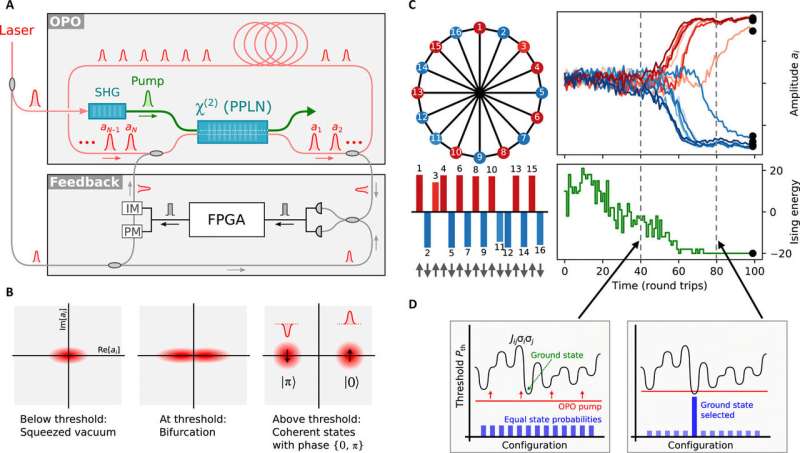June 10, 2019 report
Researchers find connectivity more important that thought for specialized optimizing machines

A team of researchers with members affiliated with several institutions in the U.S. and Japan reports that connectivity is more important than thought when building specialized optimizing machines. In their paper published in the journal Science Advances, the group describes how they tested connectivity importance on two kinds of specialized optimizing machines.
As traditional computers approach the limits of Moore's Law, scientists have turned their attention to alternatives. To that end, a lot of work has been done to determine if a truly useful quantum computer will live up to expectations. Researchers have also suggested other types of technology for building specialized optimizing machines—one such example is the Ising machine being pioneered at Stanford University. It is a type of computer that has been designed specifically to run what is known as the Traveling Salesman problem, an exercise in which a traveling salesman must visit each of his clients and return home between each trip in the most efficient way. Clearly, if there are only a few cities, the traveling salesmen problem is trivial—however, when the number of cities climbs, things grow difficult. The Ising machine uses optical and electrical processors to solve the problem and does so much more efficiently than conventional computers. In this new effort, the researchers found that engineers working on specialized optimizing machines might be overlooking connectivity.
To illustrate how much of a difference connectivity can make in machine design, the researchers pitted a quantum annealer built by D-Wave Systems against an Ising machine. They gave both machines the same tasks and measured how long it took them to solve them, noting that one of the biggest differences between them is the degree of connectivity involved in their design. The Ising machine design, they note, exhibits far more efficient connectivity.
The researchers report that for applications requiring high connectivity, the Ising machine outperformed the D-Wave machine—in some cases, dramatically. On one of the most complicated problems, it beat the quantum annealer by a factor of 10 million. For sparsely connected problems, the reverse was true, with the quantum annealer clearly outpacing the Ising machine.
The researchers suggest their results highlight the importance of addressing connectivity issues when designing specialized optimizing machines.
More information: Ryan Hamerly et al. Experimental investigation of performance differences between coherent Ising machines and a quantum annealer, Science Advances (2019). DOI: 10.1126/sciadv.aau0823
Journal information: Science Advances
© 2019 Science X Network



















